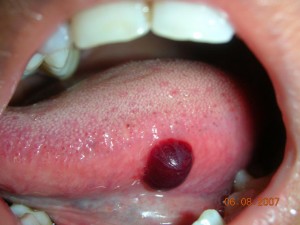Impact-R in the Diagnosis of Immune Thrombocytopenic Purpura
Saturday, December 10th, 2011A novel method to test for platelet function may be an important adjunct in the diagnosis of and research about ITP. This is the CPA or Cone and Plate Analyzer (IMPACT-R) which tests for platelet adhesion and aggregation under simulated arterial flow conditions.
Immune Thrombocytopenic Purpura (ITP) otherwise known as Idiopathic Thrombocytopenic Purpura, is an acquired platelet disorder. This involves immune-mediated destruction of platelets as well as inhibition of platelet release from the megakaryocyte. The exact nature of the immune dysfunction is not known but is usually associated with infections and auto-immune disorders. Common infections causing ITP are Human Immunodeficiency Virus and Hepatitis C. Systemic Lupus Erythematosus is the most common auto-immune disorder implicated.
ITP usually presents as an acute disease in children and runs a more chronic course in adults. Mucocutaneous bleeding in the gastrointestinal tract (gum bleeding, oral mucosal bleeding, etc.), and in the female reproductive tract (heavy menstrual bleeding) are seen. Patients also note ecchymoses and petechiae. Thrombocytopenia on a routine CBC may be the only sign
prompting a consultation. Life-threatening bleeding very rarely occurs and is usually heralded by oral blood blisters and retinal hemorrhage.
A careful and comprehensive history and physical examination will reveal a high index of suspicion for ITP. Laboratory testing to confirm the diagnosis includes: complete blood count with a peripheral blood smear, bone marrow biopsy, clotting time and bleeding time. The peripheral smear will show large platelets with normal morphology. Laboratory tests to look for the secondary causes of ITP are recommended. These are: testing for HIV and Hepatitis C, serologic testing for SLE. If anemia is present, a Coomb’s test is done to rule out Evan’s Syndrome. This syndrome is a combination of ITP and autoimmune hemolytic anemia.
The new Impact-R cone and plate analyzer can be of use in screening for ITP and also for monitoring therapeutic response.
Treatment for ITP depends on severity. Mild ITP, or those without significant bleeding symptoms and severe thrombocytopenia, can be treated in an outpatient setting. Agents include Prednisone, Rh0(D) immune globulin, intravenous gammaglobulin (IVIgG). Severe ITP requires hospitalization and treatment with high-dose glucocorticoids, anti-Rh0(D), IVIgG, and immunosuppressive agents such Rituximab. Patients who relapse after medical therapy may benefit from a splenectomy.
